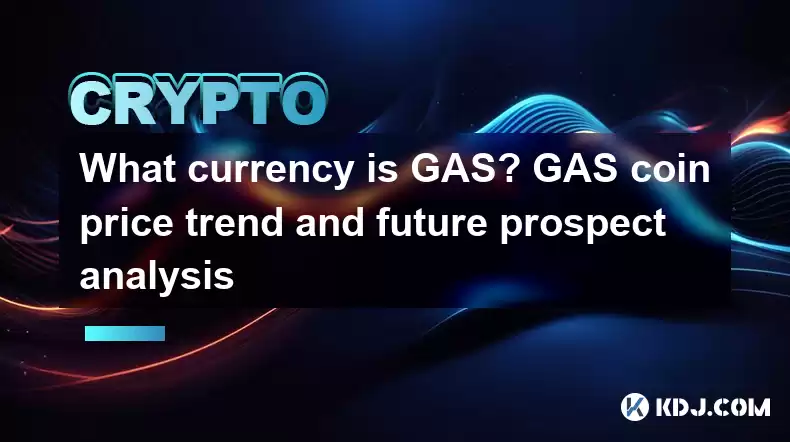-
 Bitcoin
Bitcoin $117600
0.25% -
 Ethereum
Ethereum $4424
0.10% -
 XRP
XRP $3.101
0.50% -
 Tether USDt
Tether USDt $1.001
-0.01% -
 BNB
BNB $836.2
1.26% -
 Solana
Solana $188.8
2.11% -
 USDC
USDC $1.000
0.01% -
 Dogecoin
Dogecoin $0.2301
0.57% -
 TRON
TRON $0.3485
-1.00% -
 Cardano
Cardano $0.9209
-1.34% -
 Hyperliquid
Hyperliquid $46.72
-1.19% -
 Chainlink
Chainlink $22.62
4.84% -
 Stellar
Stellar $0.4275
-0.38% -
 Sui
Sui $3.761
1.91% -
 Bitcoin Cash
Bitcoin Cash $586.7
-0.25% -
 Ethena USDe
Ethena USDe $1.001
0.01% -
 Hedera
Hedera $0.2510
2.06% -
 Avalanche
Avalanche $24.21
2.22% -
 Litecoin
Litecoin $119.7
1.07% -
 Toncoin
Toncoin $3.450
1.06% -
 UNUS SED LEO
UNUS SED LEO $9.411
-0.93% -
 Shiba Inu
Shiba Inu $0.00001298
1.20% -
 Uniswap
Uniswap $10.98
3.25% -
 Polkadot
Polkadot $3.961
2.16% -
 Dai
Dai $1.000
0.00% -
 Bitget Token
Bitget Token $4.642
0.95% -
 Cronos
Cronos $0.1514
0.57% -
 Ethena
Ethena $0.7290
3.78% -
 Monero
Monero $254.1
7.69% -
 Pepe
Pepe $0.00001102
2.47%
What currency is GAS? GAS coin price trend and future prospect analysis
GAS, the native token of the NEO blockchain, serves multiple critical functions, including transaction fees, smart contract execution, and network governance, and its price has experienced significant fluctuations over time, driven by factors such as blockchain development, market adoption, and investor sentiment.
Feb 02, 2025 at 10:30 am

Key Points:
- Understanding GAS: Its Role and Function
- Historical Price Performance of GAS
- Market Analysis and Future Price Projections
- Factors Influencing GAS Price Trends
- Potential Growth Drivers for GAS
- FAQs Related to GAS
What is GAS and Its Purpose in the Cryptocurrency Ecosystem?
GAS is the native token of the NEO blockchain, a decentralized, open-source platform that enables the development and deployment of smart contracts. It serves several crucial functions within the NEO ecosystem:
- Transaction Fees: GAS is required to pay for transaction fees on the NEO blockchain. These fees cover the computational resources used to process and validate transactions.
- Smart Contract Execution: GAS is consumed when smart contracts are executed on the NEO blockchain. Its supply ensures a fair distribution of resources and incentivizes network participants to participate in the validation process.
- Network Governance: GAS holders can participate in the governance of the NEO blockchain by casting their votes on proposed changes or network upgrades. This empowers the community to shape the future direction of the ecosystem.
GAS Coin Price Trend: Historical Analysis and Performance
Since its inception in 2017, GAS has experienced significant price fluctuations, mirroring the broader cryptocurrency market trends. Notable price movements include:
- Initial Launch (2017): GAS debuted at around $0.16, followed by a rapid surge to an all-time high of $20 during the bull run of 2017.
- Market Correction (2018-2019): GAS price fell sharply during the bear market of 2018 and 2019, dropping to a low of around $0.30.
- Recovery and Growth (2020-2021): As the cryptocurrency market rebounded in 2020 and 2021, GAS price gradually recovered and rose to around $50.
- Recent Volatility (2022-Present): GAS price hit a new all-time high of $120 during the bull market of 2022, but it has since experienced a significant correction alongside the wider market downturn.
Market Analysis and Future Price Projections for GAS
Predicting the future price of GAS is challenging, but market analysts consider various factors to provide projections:
- Blockchain Development: Ongoing developments within the NEO ecosystem, such as smart contract upgrades and the integration of new applications, can positively impact GAS demand and price.
- Market Adoption: Increased adoption of NEO-based smart contracts and dApps (decentralized applications) could drive demand for GAS.
- Cryptocurrency Market Trends: The health of the overall cryptocurrency market can significantly affect the price of GAS and other altcoins.
- Speculation and Trading: Short-term price movements can be influenced by speculation and trading activities of individual market participants.
Factors Influencing GAS Price Trends
Several factors influence the price trends of GAS:
- Supply and Demand: The balance between GAS supply and demand plays a crucial role. If demand for GAS exceeds supply, its price tends to rise.
- Blockchain Activity: The number and type of transactions on the NEO blockchain can impact GAS consumption and demand.
- Competition: GAS competes with other utility tokens of similar platforms, such as ETH (Ethereum) and BNB (Binance). The success and adoption of these platforms can influence GAS price.
- Investor Sentiment: Market sentiment towards GAS and the broader cryptocurrency market can drive price fluctuations.
Potential Growth Drivers for GAS
The long-term growth potential of GAS stems from the following drivers:
- NEO Ecosystem Expansion: As the NEO ecosystem continues to evolve and attract developers and projects, demand for GAS is likely to increase.
- Smart Contract Adoption: The growth of DeFi (decentralized finance) and other smart contract-based applications can drive demand for GAS as it fuels these transactions.
- Cross-Chain Integrations: The integration of NEO with other blockchains could expand the use cases of GAS and increase its adoption.
- Governance and Ecosystem Participation: GAS allows holders to participate in the governance of the NEO blockchain, which could attract investors looking for long-term value and influence.
FAQs Related to GAS:
- What is NEO: NEO is a decentralized, open-source platform that enables the development and deployment of smart contracts.
- What is the Role of GAS: GAS is the native token of the NEO blockchain that serves as transaction fees, powers smart contract execution, and allows for network governance.
- Where Can I Buy GAS: GAS is available on various cryptocurrency exchanges, such as Binance, Huobi, and KuCoin.
- How is GAS Stored: GAS can be stored in hardware wallets, software wallets, and exchange-based accounts that support NEO assets.
- What is the Symbol for GAS: The ticker symbol for GAS on cryptocurrency exchanges is GAS.
Disclaimer:info@kdj.com
The information provided is not trading advice. kdj.com does not assume any responsibility for any investments made based on the information provided in this article. Cryptocurrencies are highly volatile and it is highly recommended that you invest with caution after thorough research!
If you believe that the content used on this website infringes your copyright, please contact us immediately (info@kdj.com) and we will delete it promptly.
- Kazakhstan's Crypto Leap: Bitcoin ETF and Central Asia's Digital Finance Future
- 2025-08-13 12:45:19
- BlockDAG Presale Blazes Past $371M: Fundraising Frenzy Fuels Crypto Sensation
- 2025-08-13 13:05:21
- Meme Coins: Chasing the 2025 Surge – Which Will Moonshot?
- 2025-08-13 10:25:23
- Bitcoin's Wild Ride: Rally, Pullback, and What's Next
- 2025-08-13 10:25:23
- Bitcoin, Bitmax, and Institutional Demand: A New Era of Crypto Investment
- 2025-08-13 10:45:12
- Solana, ROAM, and Airdrops: What's the Buzz in 2025?
- 2025-08-13 11:35:13
Related knowledge

What is Ethereum’s Slashing mechanism and how to punish malicious behavior?
Feb 20,2025 at 03:08am
Key PointsOverview of slashingDifferent types of slashing in EthereumIncentives and consequences of slashingIdentifying and reporting slashed validato...

What is the verifier node of Ethereum and how to become a verifier?
Feb 19,2025 at 06:00pm
The Verifier Node of Ethereum: A Comprehensive GuideKey Points:What is a Verifier Node?How to Become a Verifier NodeResponsibilities and Rewards of a ...

What is Ethereum’s staking, and how to participate and earn money?
Feb 19,2025 at 04:37pm
Key Points:Understanding Ethereum's Staking MechanismSteps to Participate in StakingBenefits and Rewards of StakingSecurity and Risk ConsiderationsTec...

What is Ethereum’s DAO (Decentralized Autonomous Organization) and how does it work?
Feb 20,2025 at 03:12am
Key PointsDefinition and Structure of a DAOGovernance and Decision-Making in DAOsBenefits and Use Cases of DAOsChallenges and Limitations of DAOsWhat ...

What is Ethereum's multi-signature wallet and how to improve security?
Feb 20,2025 at 02:18pm
Key Points:Understanding the Concept of a Multi-Signature WalletBenefits and Drawbacks of Multisig WalletsRequirements for Setting Up a Multisig Walle...

What is Ethereum's oracle and how to provide data for smart contracts?
Feb 21,2025 at 01:30am
Key Points:Understanding the concept of oracles in EthereumExploring different types of oraclesDetailed guide on how to provide data for smart contrac...

What is Ethereum’s Slashing mechanism and how to punish malicious behavior?
Feb 20,2025 at 03:08am
Key PointsOverview of slashingDifferent types of slashing in EthereumIncentives and consequences of slashingIdentifying and reporting slashed validato...

What is the verifier node of Ethereum and how to become a verifier?
Feb 19,2025 at 06:00pm
The Verifier Node of Ethereum: A Comprehensive GuideKey Points:What is a Verifier Node?How to Become a Verifier NodeResponsibilities and Rewards of a ...

What is Ethereum’s staking, and how to participate and earn money?
Feb 19,2025 at 04:37pm
Key Points:Understanding Ethereum's Staking MechanismSteps to Participate in StakingBenefits and Rewards of StakingSecurity and Risk ConsiderationsTec...

What is Ethereum’s DAO (Decentralized Autonomous Organization) and how does it work?
Feb 20,2025 at 03:12am
Key PointsDefinition and Structure of a DAOGovernance and Decision-Making in DAOsBenefits and Use Cases of DAOsChallenges and Limitations of DAOsWhat ...

What is Ethereum's multi-signature wallet and how to improve security?
Feb 20,2025 at 02:18pm
Key Points:Understanding the Concept of a Multi-Signature WalletBenefits and Drawbacks of Multisig WalletsRequirements for Setting Up a Multisig Walle...

What is Ethereum's oracle and how to provide data for smart contracts?
Feb 21,2025 at 01:30am
Key Points:Understanding the concept of oracles in EthereumExploring different types of oraclesDetailed guide on how to provide data for smart contrac...
See all articles

























































































